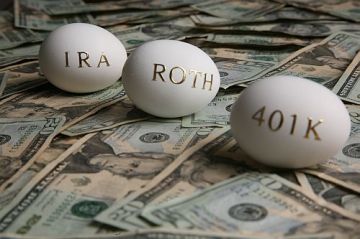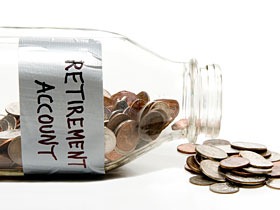 Saving for retirement can be tricky and demands foresightedness. It is contingent on factors like retirement age, planned spending in retirement, average life expectancy and how much one would like to save. It is tough to determine the right investment vehicle for maximum returns.
Saving for retirement can be tricky and demands foresightedness. It is contingent on factors like retirement age, planned spending in retirement, average life expectancy and how much one would like to save. It is tough to determine the right investment vehicle for maximum returns.
IRA vs 401(k)
The best option will be IRA coupled with qualified employer plan like 401(k). If the employer offers a matching contribution on 401(k), it is best to avail the free money. The employer can match up to 6% of your salary directed towards 401(k).
Money invested in traditional IRA qualifies for tax deduction irrespective of the adjusted gross income or AGI’s value. This can be averted by participating in 401(k) plan. Then, single filers can avail full deduction for traditional IRA contribution with a modified AGI. Qualified withdrawals from Roth IRA are not taxed.
Things to do for people desirous of saving more after benefiting from 401(k) match limit of employer
* If you qualify for opting traditional IRA’s deductible contribution, invest around $5,000 there particularly if you would stay in equivalent income tax bracket during retirement, when withdrawing. You will get pretax deduction with ample investment avenues. Next, carry on with 401(K) till the maximum you can invest has been reached.
* If you qualify for Roth IRA, put excess amount here to withdraw qualified earnings tax-free. Roth IRA never compels one to withdraw required minimum distributions when he reaches 70’s of age, unlike qualified matching or traditional IRA plans.
* If you do not qualify for any of the above, it is prudent to carry with 401(k).
The Roth 401(k)
This account functions in the same vein as regular Roth. The limit on maximum income to be contributed is lifted. You can contribute after paying taxes and withdraw qualified amount post retirement tax free.
Qualified employees have the option to put the money in either traditional or Roth 401(k). The remnant from a Roth 401(k) can be diverted straight to regular Roth IRA after leaving the employer. The employee match, if something existed, would on its own go into the traditional 401(k) irrespective of the destination of employee contributions.
If the employer proffers an option, going for a Roth 401(k) would be more sensible considering the tax bracket remains equivalent or more in retirement. The best way under such circumstances would be to max out a Roth 401(k) and subsequently putting money in Roth IRA.
Alternately, if one finds himself in a relatively low tax bracket, a traditional 401(k) would make better sense for him.
You can also protect yourself from the unknown by splitting your retirement contributions between Roth IRA and the traditional IRA, subjected to the fact that the employer offers both the options.
The amount set aside annually for contribution towards 401(k) and IRA does not get consumed by the aforesaid two, then you should adhere to the order of putting 1st 6% of salary in 401(k), next amount in Roth IRA up to the maximum limit allowed , and the left out value in 401(k).
If you have not started investing for retirement seriously yet, you should do so at the earliest.

 Retirement is a coveted stage of life when one hangs his boots with dignity just to sit back and cherish the beautiful moments. It comes as a relief from the hustle and bustle of a stressful working life, thus one has to make it a rewarding experience. However, it is stage when the regular flow of income stops and one needs to have a strong investment portfolio to cover one’s expenses and lead rest of the life without any dependence on others.
Retirement is a coveted stage of life when one hangs his boots with dignity just to sit back and cherish the beautiful moments. It comes as a relief from the hustle and bustle of a stressful working life, thus one has to make it a rewarding experience. However, it is stage when the regular flow of income stops and one needs to have a strong investment portfolio to cover one’s expenses and lead rest of the life without any dependence on others.






 1. The 401(k)
1. The 401(k)